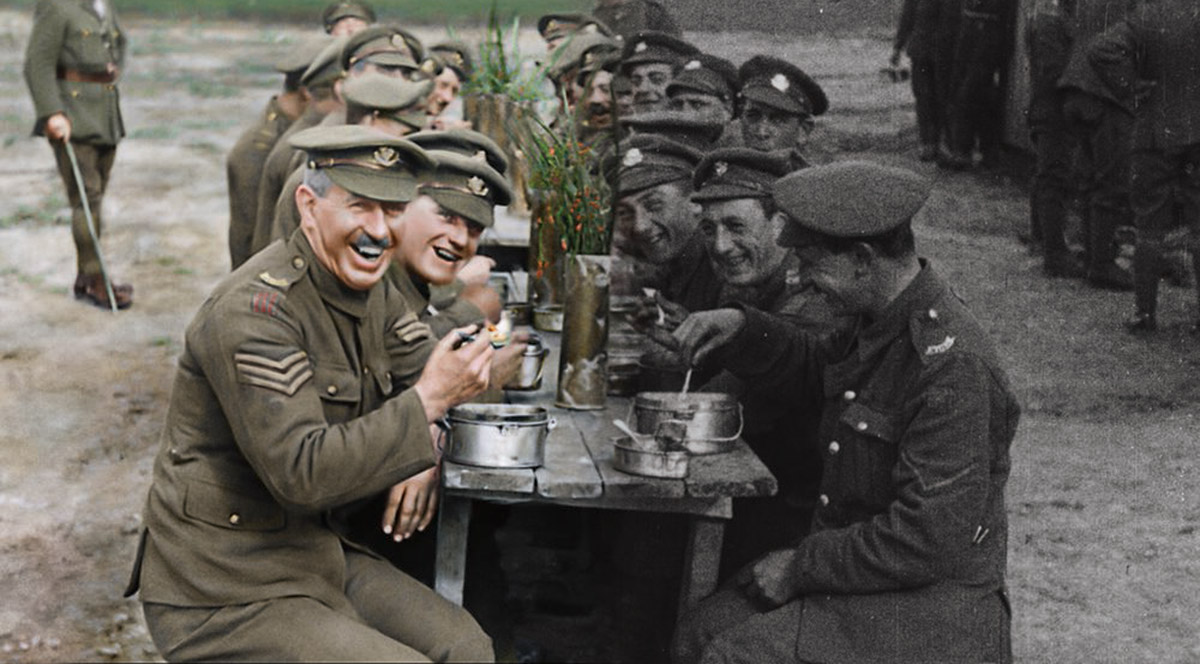It’s been a funny old decade and a half for Peter Jackson. After the critical, commercial, and awards triumphs of the “Lord of The Rings” trilogy — a blockbuster the lasting impact of which is as big as anything since “Star Wars” — he had the world at his feet. But, perhaps inevitably, given how entirely massive his initial Middle-Earth films were, his follow-ups since have struggled to get the same amount of love.
First came “King Kong,” a loving and fitfully brilliant remake of the classic that nevertheless proved indulgent at three hours. Then the critically punished prestige picture “The Lovely Bones,” a box office flop, followed by three “Hobbit” movies that, while money-makers, at best felt unnecessary, and at worst tarnished the legacy of his first three Tolkien films with understuffed plotting, by-the-motions filmmaking and that dodgy high frame rate look that has somehow aged even worse than it looked at the time.
Things have been quiet from New Zealand for a little while now, but this fall sees Jackson returning in force, with his first directorial effort since “The Hobbit: Battle Of The Five Armies” four years ago — World War I documentary “They Shall Not Grow Old,” which premiered today at the BFI London Film Festival. And while it’s likely destined to be more under-the-radar than some of his movies, it’s also something of a return to form for the director.
Commissioned by Britain’s Imperial War Museum and the BBC to mark the centenary of the Armistice, and dedicated to Jackson’s own grandfather, who fought with the British army at the time, “They Shall Not Grow Old” is an entirely archival film, assembled from the museum’s extensive collection of footage shot during the war, and audio interviews with soldiers years after the conflict. But this being Jackson, there’s something of a technological spin — the footage hasn’t just been (impressively) colorized but also converted to 3D.
It sounds like the kind of Zemeckis-ing (noun, the blind pursuit of technological innovation at the expense of everything else about filmmaking) that sunk the “Hobbit” movies, but it actually works extraordinary well. The film begins in a small window on screen and in black and white, but even then, the 3D work from the wizards at WETA helps the images pop in a way that’s rare for a documentary like this.
And then when the film reaches the battlefields of Europe, it explodes into colour and full screen (and even voice thanks to some crack ADR work, which works better in practice than it sounds on paper), and it’s a truly startling moment, giving a glimpse into the conflict that truly hasn’t been seen on screen before — even recent recreations in films like “War Horse” and “Journey’s End” can’t quite compete. There are a few moments where you half-suspect the footage has been embellished a little with CGI (tiles rattling off a roof after a huge mortar is fired), but that’s perhaps being overly suspicious and in some ways a credit to the quality of the footage that Jackson and editor Jabez Olssen have assembled.
More important, though is the consistency of perspective that Jackson takes here. Little attention is paid to the causes of the war, or even the specific events (the word ‘Somme’ doesn’t feature once as far as I could tell). Indeed, the only voices we hear are of the men who fought the battles, and this is very much a trench-side perspective: a portrait of the day to day life and experiences of your average Tommy, made all the more experiential by Jackson’s technological nous.
It makes a deeply human experience, and one that’s frequently both educational (the film’s main purpose: a copy will be given to every school in Britain) and moving. In fact, it’s not so much individual faces or interviews that leave the most lasting impression so much as it’s the cumulative impact of all the faces: Jackson shows us thousands of them: some terrifyingly young (15 or 16 in some cases), all now gone, some for more than a century. It’s positively haunting.
A few nitpicks remain. The phenomenon of shell shock, a key part of the war, is barely touched on — perhaps a symptom of what Jackson had to work with, but still something that feels like it could have used a little more time (though credit is due for keeping the running time to a brisk 100 minutes, barely half a ‘Hobbit’ movie). And the director might linger on some gory images or descriptions longer than feels tasteful — perhaps not surprising given this is the director of “Bad Taste” and “Braindead.”
But still, this is almost entirely an affecting, respectful and important historical document though one that, sadly, won’t be seen by many in its ideal big-screen, 3D form. It’s unclear how widely it’ll be seen outside the UK — it’ll air on the BBC in a few weeks, but no international release has yet been announced. But one can hope that everyone gets a chance to see it, not just for the power of what it relates, but for the chance to see a great director back on form again. [B+]
Click here for our complete coverage of the 2018 BFI London Film Festival





